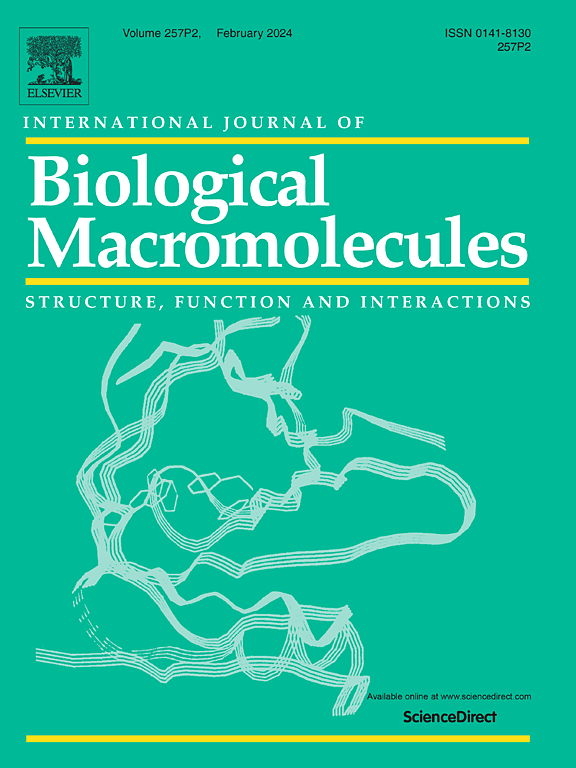Tailoring of agarose hydrogel to modulate its 3D bioprintability and mechanical properties for stem cell mediated bone tissue engineering
IF 7.7
1区 化学
Q1 BIOCHEMISTRY & MOLECULAR BIOLOGY
International Journal of Biological Macromolecules
Pub Date : 2025-04-02
DOI:10.1016/j.ijbiomac.2025.142795
引用次数: 0
Abstract
The intense gelling characteristics and viscosity constraints of agarose limit its utility as a sole ink material in 3D printing. This study presents the development of agarose bioink designed for cell-laden printing, featuring controlled printability, exceptional stiffness, and cell-responsiveness achieved via the insertion of photochemically reactive methacrylate groups. This chemical modification transforms the dense agarose network into a thinner structure, effecting a gentle thermogelling property that enhances the printability and facile cell encapsulation. Herein we examine the interplay between the degree of substitution and concentration variations to determine the optimal hydrogel composition. The best bioink composition possessed a lower shear modulus (storage modulus G' = 11.6 Pa) at 37 °C, assuring better bioprintability, while it possessed a Young's modulus of 1.4 ± 0.10 MPa in the crosslinked state, which is the highest reported in the natural single-matrix hydrogel systems. Studies with mesenchymal stem cells (MSC) confirmed that it is a good cell encapsulation matrix, achieving 111 % cell viability at 72 h. The bioprinted constructs promoted the osteogenic differentiation of MSC, as evidenced by mineralization and secretion of bone-related matrix. The gene expression analysis indicated that osteogenic marker expressions exhibited at least a two-fold increase on day 14 relative to the control group.

求助全文
约1分钟内获得全文
求助全文
来源期刊
CiteScore
13.70
自引率
9.80%
发文量
2728
审稿时长
64 days
期刊介绍:
The International Journal of Biological Macromolecules is a well-established international journal dedicated to research on the chemical and biological aspects of natural macromolecules. Focusing on proteins, macromolecular carbohydrates, glycoproteins, proteoglycans, lignins, biological poly-acids, and nucleic acids, the journal presents the latest findings in molecular structure, properties, biological activities, interactions, modifications, and functional properties. Papers must offer new and novel insights, encompassing related model systems, structural conformational studies, theoretical developments, and analytical techniques. Each paper is required to primarily focus on at least one named biological macromolecule, reflected in the title, abstract, and text.

 求助内容:
求助内容: 应助结果提醒方式:
应助结果提醒方式:


